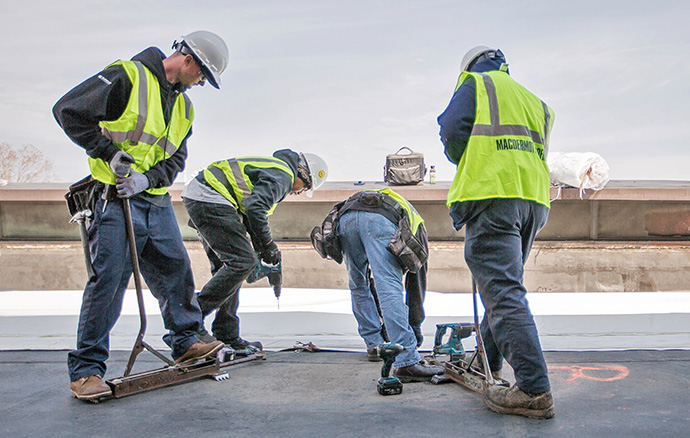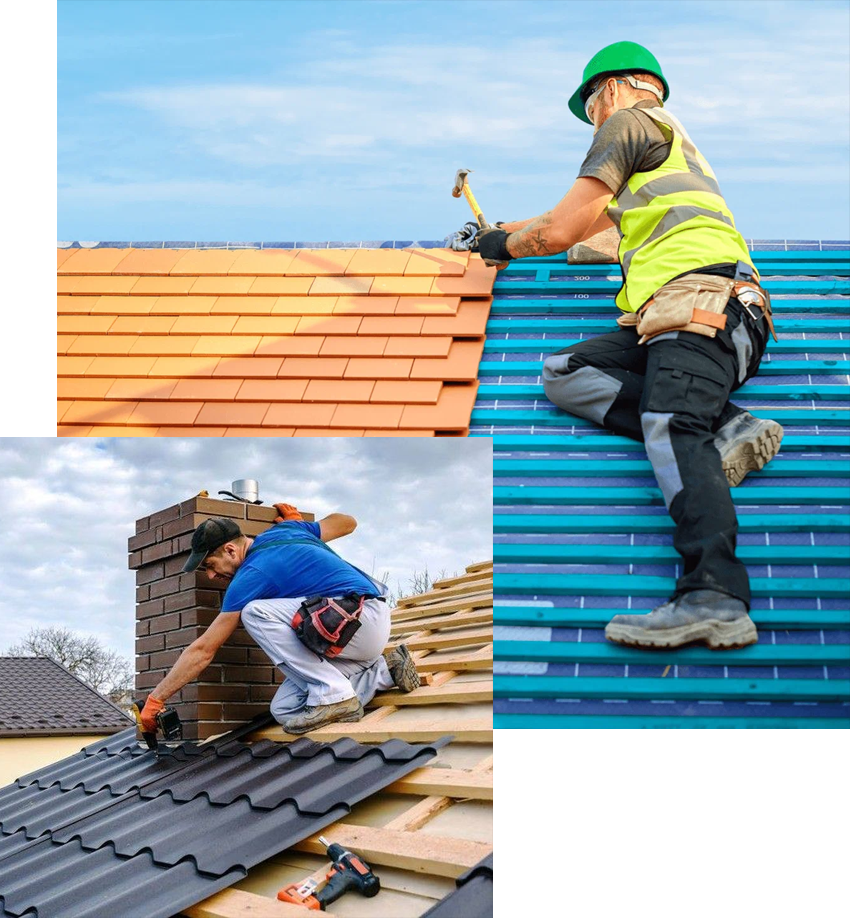Understanding the Conveniences of Roofing Flat Roofing Installation Techniques
The exploration of level roof covering installation techniques offers a compelling situation for their adoption in both domestic and business applications. Especially, these roofing systems offer substantial cost-effectiveness and power performance benefits, along with functional layout alternatives that can improve home visual appeals. Moreover, their low upkeep needs and possible for environmental benefits contribute to their appeal. However, comprehending the complete range of these benefits involves taking a look at different aspects that affect their lasting performance and sustainability. What are the crucial factors to consider in selecting the best level roof for specific requirements?
Cost-Effectiveness of Flat Roofs

In addition, the convenience of installment connected with flat roofs can cause reduced labor expenses. Because they need much less framing and architectural support, service providers can finish installations faster and efficiently. This efficiency can additionally convert right into lowered time on-site, further reducing overall expenses.
Upkeep costs can additionally play a function in the cost-effectiveness of flat roofing systems. While they might call for regular maintenances, their access permits less complicated upkeep, potentially leading to lower lasting service prices. Nevertheless, it is essential to consider the long life and toughness of the roof products used, as these factors can affect total cost-effectiveness over the roof's lifespan. Eventually, flat roof coverings can be a financially sensible option, particularly for industrial and business applications.
Power Effectiveness Perks
Flat roofing systems not just offer cost advantages however also contribute dramatically to energy efficiency. One of the key advantages of level roofing systems is their capability to suit advanced insulation methods. The insulation can be mounted directly above the architectural deck, decreasing thermal linking and lowering warm loss during colder months. This brings about decrease energy consumption for heating & cooling, inevitably leading to lowered utility costs.
Additionally, level roof coverings can support reflective products or layers that improve energy efficiency. These materials show sunshine, lowering warmth absorption and keeping cooler interior temperature levels during warm climate. This not just improves owner convenience but additionally decreases the dependence on air conditioning systems, thus more decreasing power costs.
Additionally, the style of level roof coverings enables the potential installment of solar panels or environment-friendly roofing systems. Eco-friendly roofings can give added insulation and lower the city heat island impact, while solar panels can harness renewable resource, adding to a sustainable energy cycle. Generally, the power performance benefits of level roof coverings make them a significantly prominent choice in both household and business applications, aligning with modern energy preservation objectives.
Design Versatility

Furthermore, the level roof design assists in the unification of solar panels and green roofing systems, promoting sustainability while keeping a smooth account. This flexibility includes the selection of materials, as level roofings can be created making use of a range important, consisting of bitumen, rubber, and pvc, each offering distinctive benefits in terms of resilience and visual allure.
Additionally, the lack of sloped surface areas permits for less complicated construction and can dramatically reduce the total building height, which might be necessary in city environments - Cuyahoga Falls Roof Repairs. The design adaptability integral in flat roof coverings not just improves aesthetic appeal but likewise deals with the functional requirements of owners, making them a progressively popular choice in modern style. This adaptability placements level roof as an engaging choice in design-forward tasks
Reduced Maintenance Demands
While many roof covering systems call for regular upkeep and intensive maintenance, level roofs are created to decrease these demands, supplying a useful remedy for building proprietors. Among one of the most significant benefits of flat roofs is their low maintenance demands, which can lead to long-lasting price financial savings and less problem for house owners and business property supervisors alike.
Level roofing systems usually include resilient products such as EPDM, TPO, or changed asphalt, which are crafted to stand up to different climate problems with marginal wear. Their layout enables simple accessibility, allowing simple assessments and maintenance jobs. Residential or commercial property owners can do routine checks to determine possible issues, such as pooling water or debris buildup, without the complexities commonly linked with sloped roofings.
Furthermore, level roofing systems are much less susceptible to specific kinds of damage, such as roof shingles loss or leakages brought on by the gliding of snow and ice. This strength further adds to minimized upkeep demands. Eventually, the low maintenance demands of flat roofs not only improve their appeal yet additionally give residential or commercial property proprietors with satisfaction, knowing their roof is reliable and efficient throughout its life-span.
Environmental Impact Considerations
When taking into consideration a roofing solution, the environmental effect of flat roofing systems becomes an essential factor for numerous property proprietors. Flat roof coverings can provide numerous benefits in terms of sustainability, particularly when making use of environmentally friendly products and innovations. Lots of level roof systems make use of materials that are recyclable or made from special info recycled material, which aids decrease the overall carbon impact.
Moreover, level roofings can be designed to accommodate eco-friendly roof, including plants that boosts air high quality while providing insulation and stormwater administration. This not just enhances the structure's power effectiveness but likewise minimizes the metropolitan websites heat island effect, which is increasingly essential in densely inhabited areas.
Furthermore, level roof coverings frequently assist in the installation of photovoltaic panels, allowing building owners to harness renewable resource. This assimilation not only minimizes dependence on fossil fuels yet also adds to lower energy expenses with time.
Nonetheless, it is necessary to think about the material selections and installment methods to ensure that the environmental advantages are made the most of. By selecting sustainable practices, level roofing system setups can play a substantial function in promoting eco-friendly building layouts, ultimately adding to a healthier earth.
Conclusion

The materials needed for flat roof coverings, such as EPDM, TPO, or changed bitumen, frequently come at a decreased price contrasted to the intricate materials made use of for sloped roof coverings, such as shingles or floor tiles.
In addition, the layout of level roofing systems allows for the prospective setup of green roofing systems or solar panels. In general, the power read review performance benefits of flat roof coverings make them a significantly preferred choice in both household and commercial applications, lining up with modern-day power preservation goals.
Ultimately, the reduced upkeep requirements of flat roof coverings not just boost their allure but additionally provide property owners with peace of mind, recognizing their roof system is efficient and dependable throughout its lifespan.
The reduced maintenance requirements and favorable ecological influence, particularly via the assimilation of solar panels and environment-friendly roof coverings, establish flat roof coverings as a lasting option.